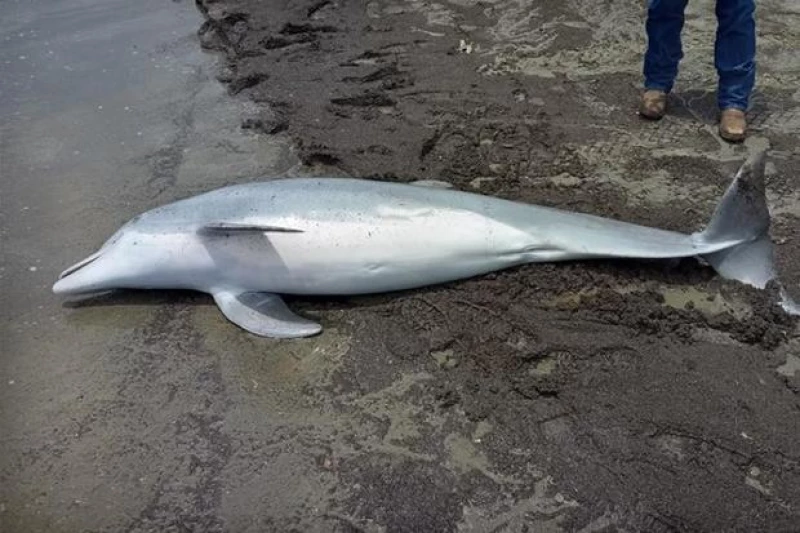Tragic Incident Involving a Dolphin
A heartbreaking discovery was made last month on a Louisiana beach - a bottlenose dolphin was found shot to death. Authorities are now offering a $20,000 reward for any information that can help in the investigation of this cruel incident. The dolphin, discovered on West Mae's Beach in Cameron Parish, had multiple bullets lodged in its brain, spinal cord, and heart.
The sad incident came to light on March 13 when a member of the public found the dolphin and reported it to the Southeast Marine Mammal Stranding Hotline. The Audubon Aquarium Rescue team transported the animal to New Orleans for an autopsy, which revealed that the dolphin succumbed to the injuries inflicted near or at the time of death.
It is important to note that "harassing, harming, killing, or feeding wild dolphins is prohibited under the Marine Mammal Protection Act," as stated by NOAA. The authorities are urging the public to come forward with any information regarding this tragic incident. Violations of the act carry penalties of up to a year in jail and fines of up to $100,000.

If you have any information regarding the incident, you can contact the NOAA Enforcement Hotline at 800-853-1964. Tips can be left anonymously, but to be eligible for the $20,000 reward for providing relevant information leading to a criminal conviction, you must provide your name and contact details.
For any other reports of injured marine animals, you can reach out to the Southeast Marine Mammal Stranding Hotline as stated by NOAA.
West Mae's Beach is situated on Barataria Bay, the largest estuary in Louisiana, home to year-round bottlenose dolphins. However, the population is under threat, according to the Marine Mammal Commission. Following the 2010 Deep Horizon oil spill, the dolphin population in the bay decreased by 45%, with many experiencing reproductive issues and diseases due to oil exposure.
There are approximately 31 bay, sound, and estuary (BSE) dolphin populations in the Gulf of Mexico, with the Barataria Bay population being the largest. However, as of 2019, there are only an estimated 2,000 dolphins in the bay, according to the commission.
Another threat to the population is the Mid-Barataria Sediment Diversion project, which diverts water and sediment from the Mississippi River into the bay to restore eroding marshland. These dolphins, however, thrive in saltwater, and the excessive amount of freshwater entering the bay is impacting their habitat. More than 500 dolphins died within the first year of this project, according to the commission.







